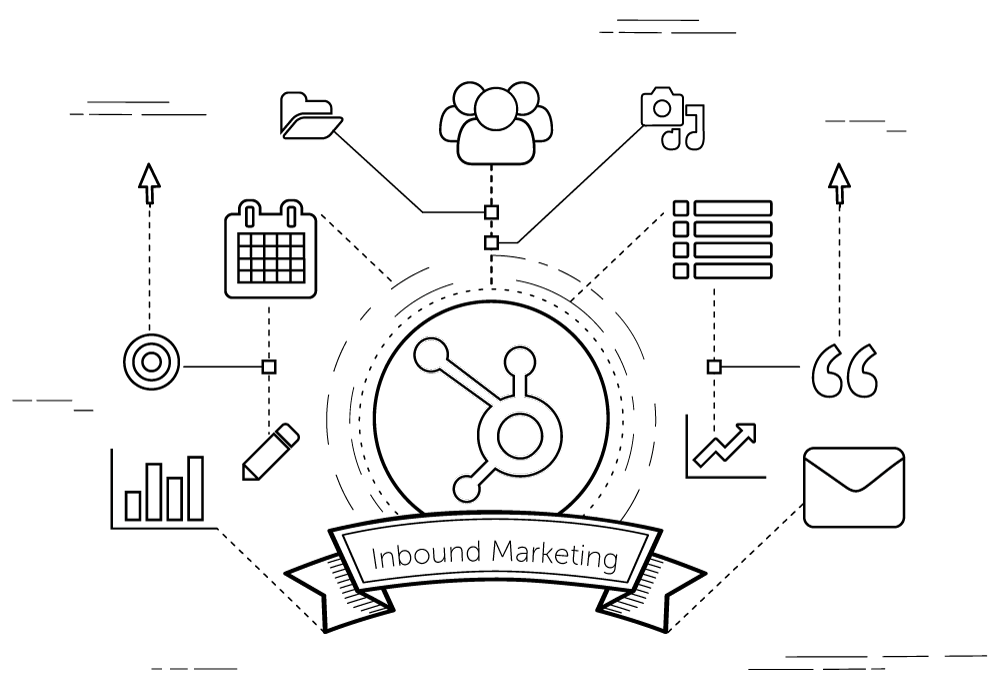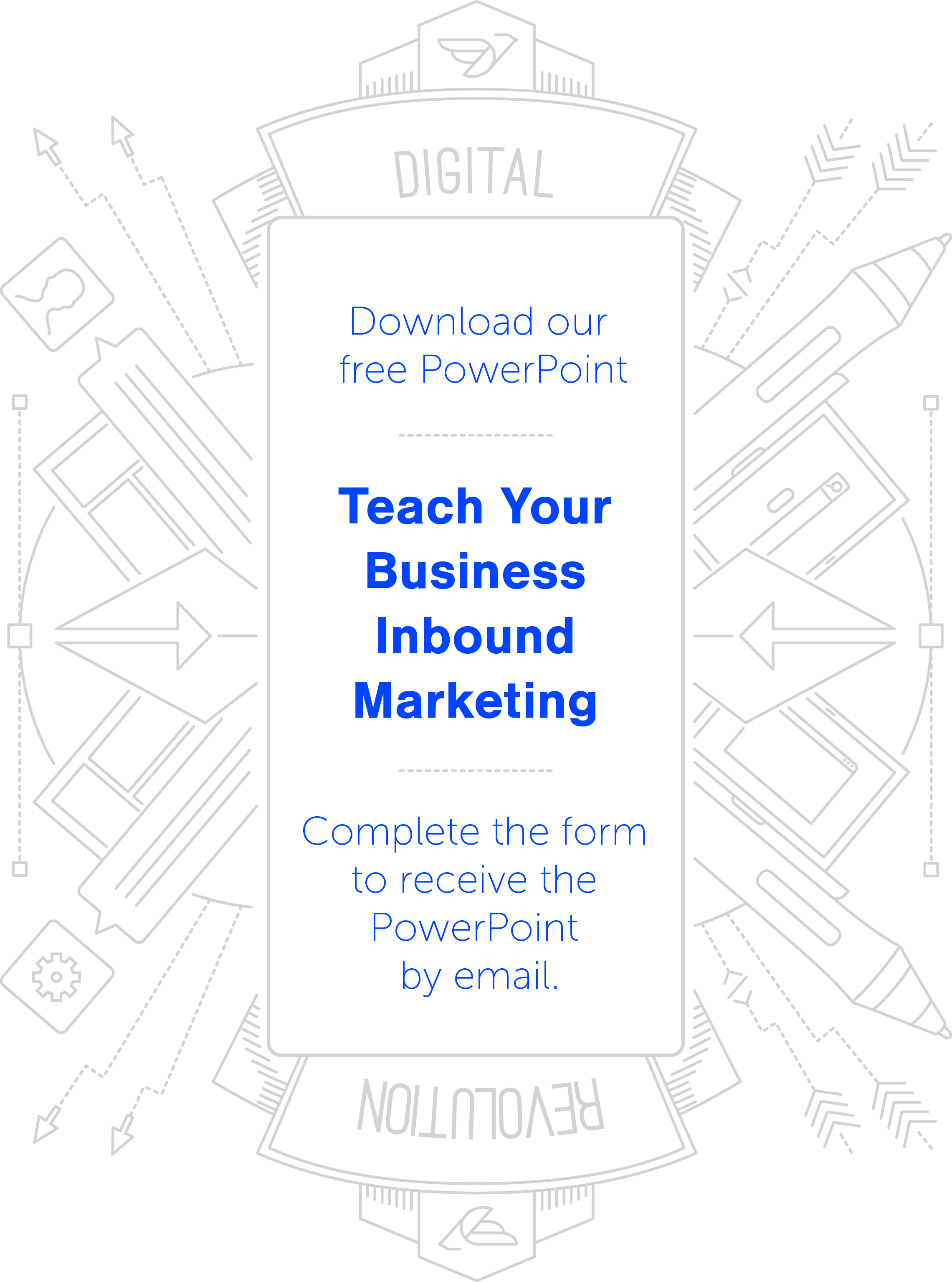What is inbound marketing? Is it different from digital marketing?
So as a business owner or marketing professional you’ve definitely heard about digital marketing such as Search Engine Optimization (SEO). It’s probably been over-marketed to you by telemarketers and spam emails alike. I’m also betting that you know having a website and social media presence is important for any business today. Really, these things have become synonymous with being in the current decade with your business marketing. Most industries and business leaders know that these initiatives are important in some way shape or form for successful marketing. What we’ve often found in speaking with many business owners is that they still don’t understand exactly why these things are important. This is a great place to begin when we start to talk about Inbound Marketing.
Digital marketing is our tool belt.
Let’s think about digital marketing as an arsenal of tools to use to promote your business. It’s a tool belt filled with different tools for different things. For example in this tool belt we have SEO, blog writing, website content, social media, paid digital advertising, videos, eCommerce and the list continues. These are all tools. These tools are not always useful or applicable for every business and for every industry. Just like not every tool is right for the job. Sometimes we’ll select specific tools to tackle a specific job.
Inbound marketing is our method of using the tools.
Inbound Marketing is a specific methodology of using the tools in our Digital Marketing tool belt. It’s the logic, structure and plan behind using the right tools at the right time. The Inbound Marketing methodology is designed to drive warm leads in towards your business – hence the term “inbound”. This is different than outbound marketing that sends information out to cold leads. For example outbound marketing would include tools like radio, TV, direct mail and cold calling. These tools require a strong outbound effort towards cold leads to return any interest in your business. Inbound Marketing uses the tools in our digital marketing tool belt to create valuable content that drives interest and traffic in to your business. Examples would include a very informative blog post that teaches on a topic that your target market is trying to learn more about. In its simplest form inbound marketing is the method of creating something of value that your target market is already looking for.
Is inbound marketing more effective than outbound marketing?
It’s not a simple “yes” that inbound is more effective as far as immediate exposure but it is a big “yes” with over all return on investment. That’s because it’s permission-based marketing that meets consumers where they are instead of knocking down their door. Inbound marketing utilizes marketing dollars in a much more efficient manner because the method recognizes and targets people who are already looking for what you have to offer instead of pushing out a message to an anonymous and wide range of people.
Instead of buying ads, buying email lists, or cold calling, inbound marketing focuses on creating educational content that pulls people toward your website where they can learn more about what you sell on their own accord.
Additionally, inbound marketing uses different tools, as discussed in our tool belt illustration. When digital marketing tools are used in this methodology, the cost to implement and inbound marketing strategy is much less expensive than an outbound strategy. Plus the investment last much longer. A radio ad may only run for a week or two but a great blog post written around keywords that people are searching for could continue to drive qualified traffic to your business for years. Another argument can be made that in today’s day and age we are constantly bombarded with communication: specifically advertising. We hear the radio, television ads, have tons of spam emails, marketing emails, social media ads and the list goes on. We have learned to block out much of this noise. The only time we’re not blocking out these marketing efforts is when we have a very specific need and are looking for a solution. This is where inbound marketing saves the day. If I need a solution, I go to a search engine like Google (as so many of us do naturally now) and I look for information. The information I find influences my understanding and
Inbound marketing in a nutshell: Market with a magnet, not a sledgehammer.
Another argument can be made that in today’s day and age we are constantly bombarded with communication: specifically advertising. We hear the radio, television ads, have tons of spam emails, marketing emails, social media ads and the list goes on. We have learned to block out much of this noise. The only time we’re not blocking out these marketing efforts is when we have a very specific need and are looking for a solution. This is where inbound marketing saves the day. If I need a solution, I go to a search engine like Google (as so many of us do naturally now) and I look for information. The information I find influences my understanding and decision-making process and might even prompt me to exchange my contact information to learn more or download a useful document. Then because I’ve given permission, I may receive more communication and resources form the information source to continue to inform my buying decision. If I’m ready to make a buying decision I then feel confident in the resource I’ve continued to learn from to complete the sale. This has become a very normal flow in the buyer’s journey. We research, we learn, we continue to learn until we’re ready to make a buying decision.
The major themes of Inbound Marketing
To implement a successful inbound marketing strategy the following themes should be present:
- Content Creation – something of value to your target market
- Lifecycle Marketing – the recognition that people want different information at different stages of the buying process
- Personalization & Context – customized content based on your leads interests are critical
- A Multi-Channel Presence – this means people can find you and your resources in the way they prefer (social media vs. website vs. video, etc.)
- Integration – you’re able to manage all of your data and metrics well to keep everything churning like a well-oiled machine
A quick summary
In summary, Inbound Marketing as a methodology is about winning fans, building trust, and being smart to gain leads. It’s the opposite of what most outbound marketing efforts produce: skepticism, being ignored and having to “out spend” your competitors.
There are many more topics to cover within the Inbound Marketing methodology such as what tools to use when and how to customize a strategy for your business and industry. If you want to continue to learn more, sign-up to download a PowerPoint on “Teach Your Business Inbound Marketing” and our team will provide you with updates and learning resources on how to successfully market your business in the digital age.






